

The Ninth Session of the World Urban Forum will be the first session to focus on the implementation of the New Urban Agenda adopted in Quito at the Habitat III.
UHWB is at the WUF9 at a booth with its sponsor, the International Institute for Global Health of the United Nations University (UNU-IIGH)
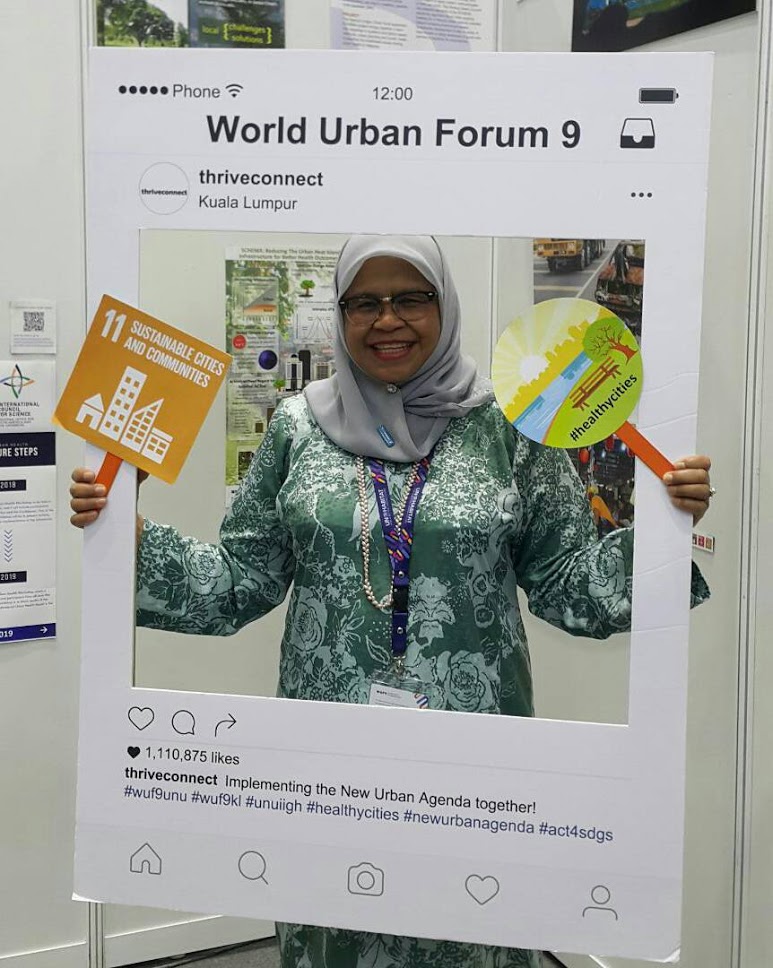
UN‐Habitat Ms. Maimunah Mohd Sharif (Malaysia) is the Executive Director of the United Nations Human Settlements Programme (UN‐Habitat), appointed at the level of Under‐Secretary‐ General by the Secretary‐General, following an election by the General Assembly on 22 December 2017. She succeeds Dr. Joan Clos of Spain.
At the WUF9 we will hold a small citizens modelling exercise and introduce interested participants to urban systems modelling by making use of the Sensitivity Modelling tool developed by Prof. Frederic Vester.
We invite participants of the WUF9 to define system variables for the system "Healthy Kuala Lumpur" and jointly define interrelations in order to get an idea of the complexities of urban system design and possible interventions for improving the health of the city.
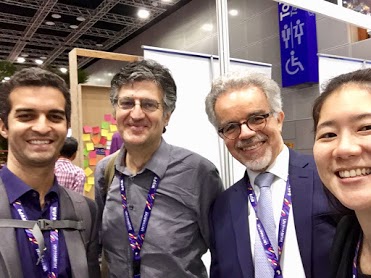
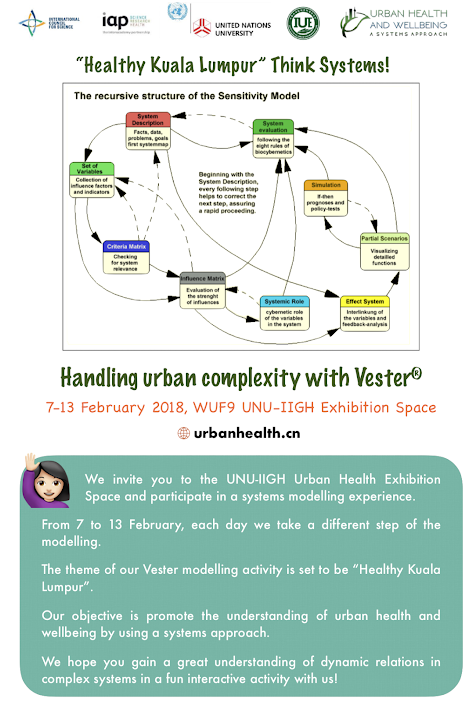
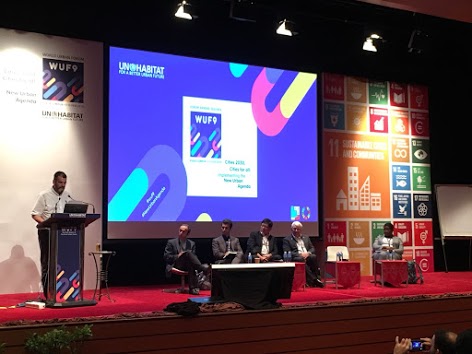
7-13 Feb, 2018, WUF9, Kuala Lumpur, UNU-IIGH Exhibition Space
First working steps
The Sensitivity Model is a trans-disciplinary modelling approach. It has been developed by Prof. Frederic Vester as an attempt to assist groups of experts from different disciplinary domains to build a common language for complex adaptive systems modelling, as opposed to the language of expert jargons.
System description
Describe the system “Healthy KL” by a set of variables. Make sure the describing system variables are chosen from across different urban sectors. For example:
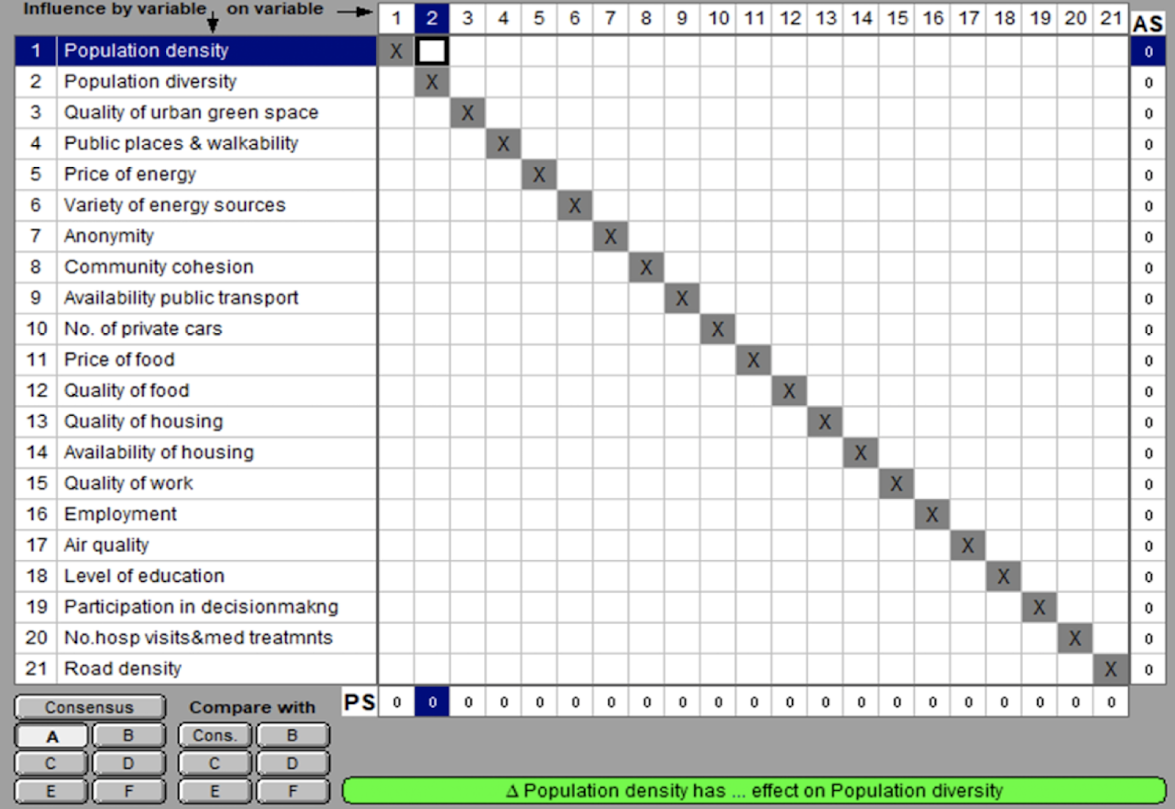
Impact matrix
The "impact matrix" defines the impact of each system variable on each other.
0 =There is no impact from VarA on VarB.
1 = Var1 needs to change a lot in order to bring about a one-unit change to Var2 (underproportional change), i.e. there is a weak relation from VarA on VarB.
2 = A change of Var1 causes the same extent of change in Var2. One-unit change of Var1 causes a one-unit change of Var2 (proportional).
3 = Var1 needs to change only a little in order to cause a one-unit change in Var2 (overproportional change), i.e. there is a strong direct causal relation from Var1 on Var2.
The impact matrix calculates 4 types of values, in order to define the systemic role of each variable:
1) the active sum, 2) the passive sum, 3) the Q‐ values and 3) the P‐values.
A high active sum (AS) indicates that one variable has a higher impact on other variables than others impact on it. A high passive sum (PS) says that one variable is more strongly being impacted by all other variables than it impacts others. Variables are reactive if they have high PS values and Q-values lower than 1.
Q‐values (quotient value) show the relation of AS/PS and inform about the ratio of activeness and passiveness of the variable within the system. A high Q‐value indicates that the variable is highly active. Neutral variables are around 1. Passive variables have Q-values smaller than 1.
P‐values (product values) are calculated by AS*PS and indicate the overall interwovenness/integratedness of the variable into the entire system. Variables with high interwoveness are considered “critical variables” and low interwoveness is considered “buffering” within the system.
Variables with a critical systemic role are highly interconnected with others (high P-values) and are highly active (Q-values close to 1 and higher).